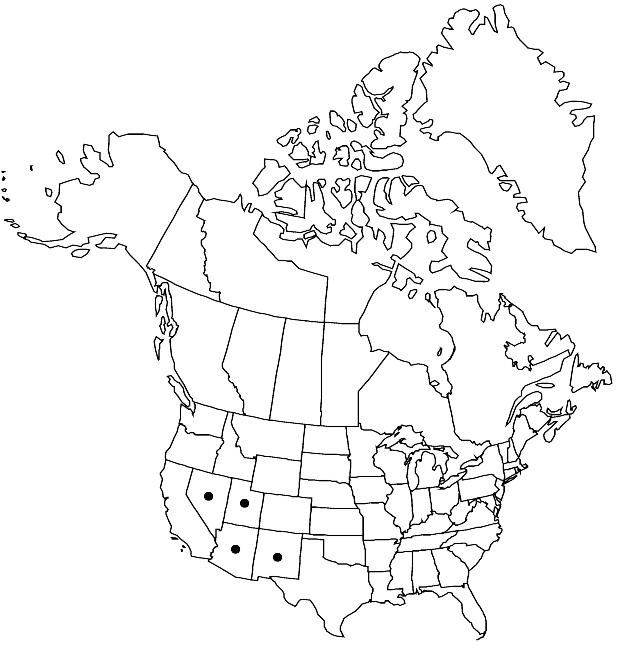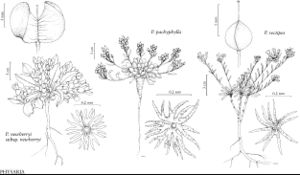Physaria newberryi
in J. C. Ives, Rep. Colorado R. 4: 6. 1861.
Perennials; caudex simple or branched, (branches often covered with persistent leaf-bases, cespitose); densely (silvery) pubescent, trichomes rays fused at least 1/2 their length. Stems several from base, ascending to erect (arising laterally, unbranched), 0.5–1 (–2.5) dm. Basal leaves (ascending to erect, petiole slender); blade oblanceolate to obovate, 3–8 cm, (base tapering to petiole), margins incised or dentate with broad teeth, (apex acute to obtuse). Cauline leaves: blade linear-oblanceolate to oblanceolate, 1–2 cm, margins entire. Racemes dense (elongated or not in fruit, 2.5–8.5 (–10) cm). Fruiting pedicels (divaricate, straight), 5–11 (–15) mm, (rigid, fruits not pendent on arching pedicels). Flowers: sepals (greenish yellow), lanceolate, 6–8.5 mm, (saccate and cucullate); petals spatulate to narrowly oblanceolate, 7–10 (–12) mm. Fruits didymous, sides curved and angular, highly inflated, 6–16 × 8–12 mm, (papery, apical sinus broad and concave); valves (retaining seeds after dehiscence, distinctly 2-keeled on side away from replum), pubescent, trichomes appressed; replum linear to linear-lanceolate, as wide as or wider than fruit, apex acute; ovules 4–8 per ovary; style 2–9 mm, (usually not exceeding sinus). Seeds slightly flattened, (ovate).
Distribution

Ariz., N.Mex., Nev., Utah
Discussion
Subspecies 2 (2 in the flora).
Physaria newberryi, with its unusual fruits, can be confused with 15. P. chambersii. In P. chambersii, the sides of the fruit are flat, the style always exceeds the top, or shoulders, of the fruit, and shoulders form an angle that does not curve in toward the style. In P. newberryi, the sides of the fruit are concave, the styles are shorter than shoulders of the silicle (except in subsp. yesicola), and shoulders of the silicle form a curved, inward arching crown on the fruit.
Selected References
None.
Key
| 1 | Styles less than 4 mm, shorter than fruit sinuses. | Physaria newberryi subsp. newberryi |
| 1 | Styles 5-9 mm, longer than fruit sinuses. | Physaria newberryi subsp. yesicola |
"wider" is not a number."not" is not a number. "elongated" is not a number."thick" is not a number."dm" is not declared as a valid unit of measurement for this property."dm" is not declared as a valid unit of measurement for this property."broad" is not a number.
